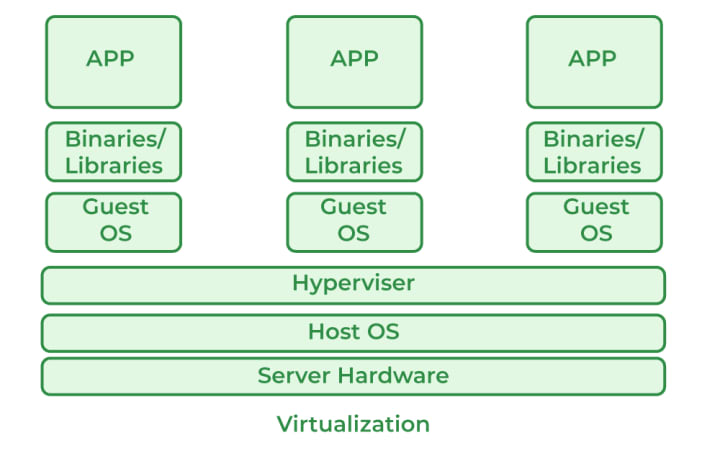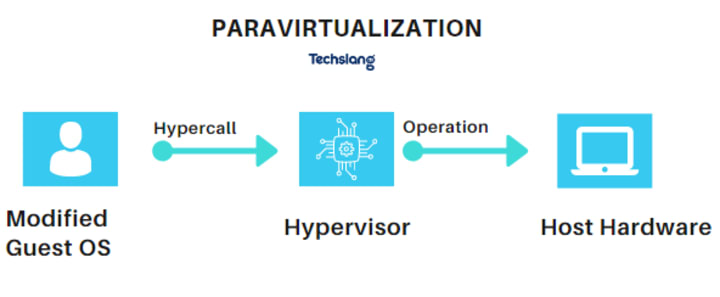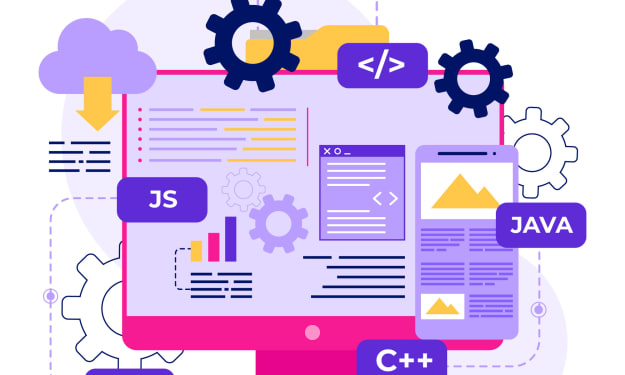
Origins and Historical Background
The origins of virtualization technology can be traced back to the 1960s when IBM's mainframe systems, such as the System/360, introduced the concept of "partitioning." This technology allowed mainframes to run different operating systems and applications in separate partitions, each with its own resources and environment. This marked the birth of virtualization technology, laying the foundation for its subsequent development.As technology evolved, virtualization gradually expanded from mainframes to minicomputers and personal computers. In the 1970s and 1980s, virtualization began to be applied on UNIX systems, such as Sun Microsystems' Solaris Zones and the chroot environment in Linux.
Types and Characteristics of Virtualization
1. Full Virtualization
Full virtualization technology achieves abstraction of physical hardware through the introduction of a Virtual Machine Monitor (Hypervisor) layer, allowing guest operating systems (Guest OS) to run unknowingly. The Hypervisor is responsible for managing resource allocation and isolation for multiple virtual machines, ensuring each VM operates safely and independently.

Characteristics:
Guest operating systems can run unmodified.
Provides high levels of isolation and security.
Supports a wide range of operating systems.
Case Studies:
KVM: As part of the Linux kernel, KVM provides full virtualization capabilities, supporting a wide range of hardware platforms and operating systems.
VMware vSphere: VMware's flagship product, offering enterprise-level virtualization solutions, supporting large-scale VM deployment and management.
Microsoft Hyper-V: Part of Windows Server, Hyper-V offers robust virtualization features, including dynamic memory allocation and live migration.
2. Paravirtualization
Paravirtualization requires the guest operating system to be aware that it is running in a virtual environment and to interact with the virtualization software through specific APIs. This technology can offer better performance than full virtualization but requires modifications to the operating system.

Characteristics:
Requires modifications to the guest operating system.
Can offer better performance than full virtualization.
Typically used for specific virtualization platforms.
Case Studies:
Xen: Originally designed as a paravirtualization platform, Xen provides an efficient virtualization solution by modifying the Linux kernel, suitable for scenarios requiring high performance and security.
3. Hardware-Assisted Virtualization
Hardware-assisted virtualization technology leverages modern processors' extended instruction sets, such as Intel's VT-x or AMD's AMD-V, to accelerate the virtualization process. These hardware features reduce the overhead of virtualization software, improving VM performance.

Characteristics:
Leverages hardware capabilities to enhance virtualization performance.
Reduces the complexity of the virtual machine monitor.
Provides improved performance and lower latency.
Case Studies:
Intel VT-x: Intel's virtualization technology, providing acceleration for virtualization software through hardware support, enabling VMs to perform closer to native speeds.
AMD-V: AMD's virtualization technology, similar to Intel VT-x, offering hardware-level virtualization support, enhancing the performance of virtualized environments.
IBM PowerVM: IBM's virtualization solution, designed specifically for Power systems, utilizes hardware-assisted virtualization technology to provide an efficient virtualized environment.
Applications of Virtualization Technology
Virtualization technology has been widely applied in various fields, including but not limited to:
Cloud computing: Cloud service providers use virtualization technology to offer scalable computing resources and services.
Development and testing: Developers use virtualization to create isolated development and testing environments.
Education and research: Educational institutions use virtualization to provide students access to a variety of operating systems and applications.
Conclusion
The development of virtualization technology has greatly propelled the modernization of IT infrastructure, offering higher efficiency, flexibility, and security. With continuous technological advancements, we can anticipate that virtualization will play an even more significant role in future computing environments.
About the Creator
novita.ai
Access 100+ APIs, including AI Image Generation & Editing with 10,000+ models , and Training APIs for custom models. Enjoy the cheapest Pay-As-You-Go pricing, freeing you from GPU maintenance hassles while building your own products.
Enjoyed the story? Support the Creator.
Subscribe for free to receive all their stories in your feed. You could also pledge your support or give them a one-off tip, letting them know you appreciate their work.






Comments
There are no comments for this story
Be the first to respond and start the conversation.